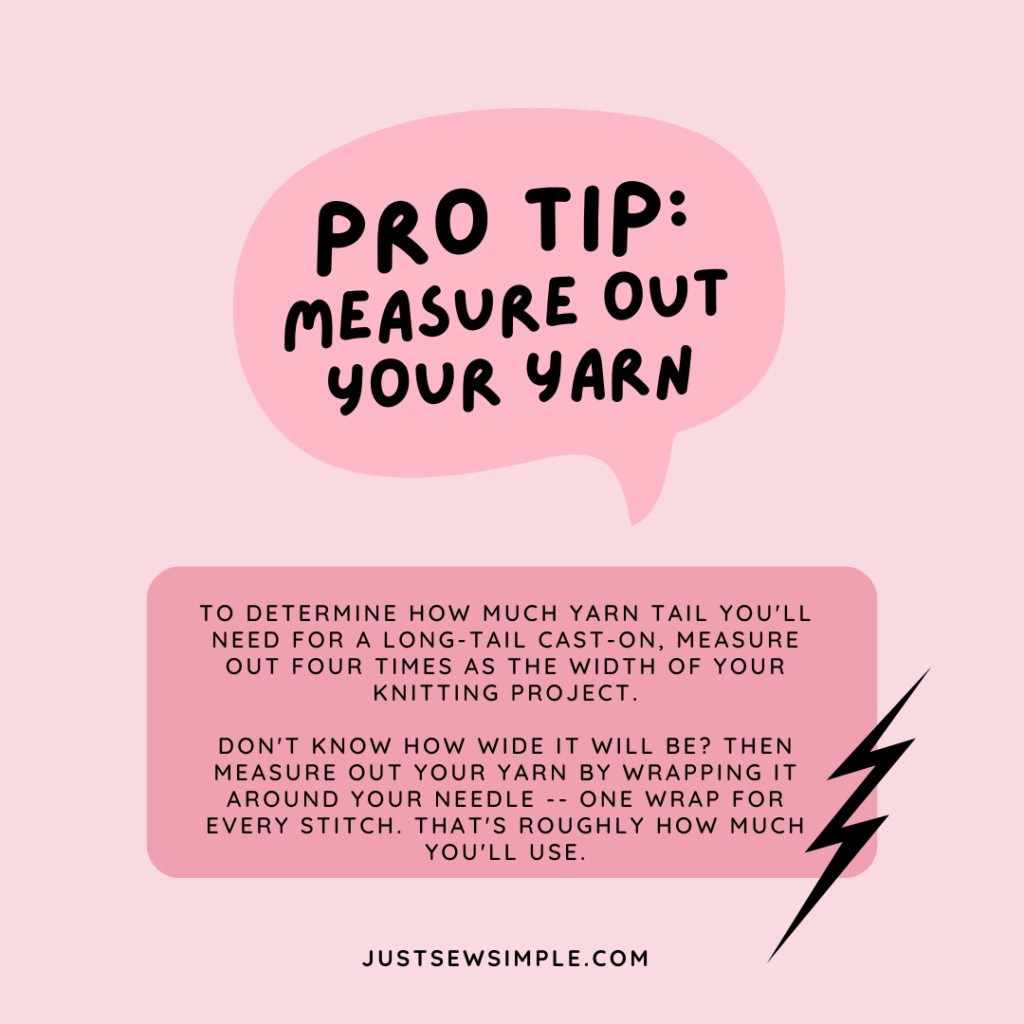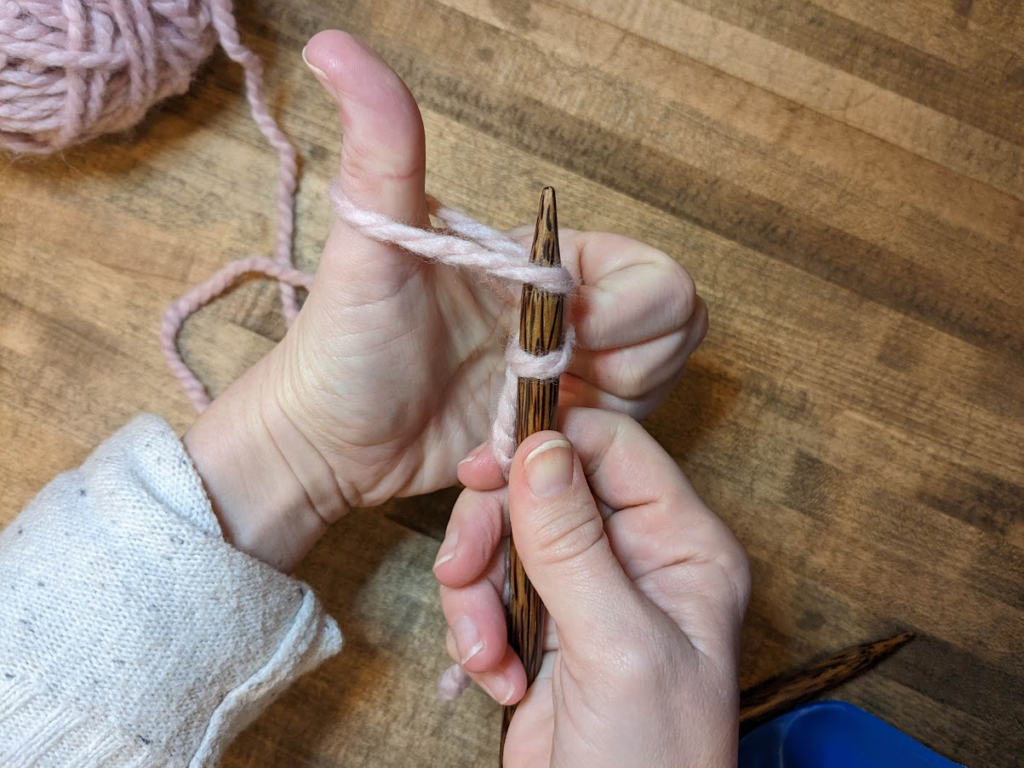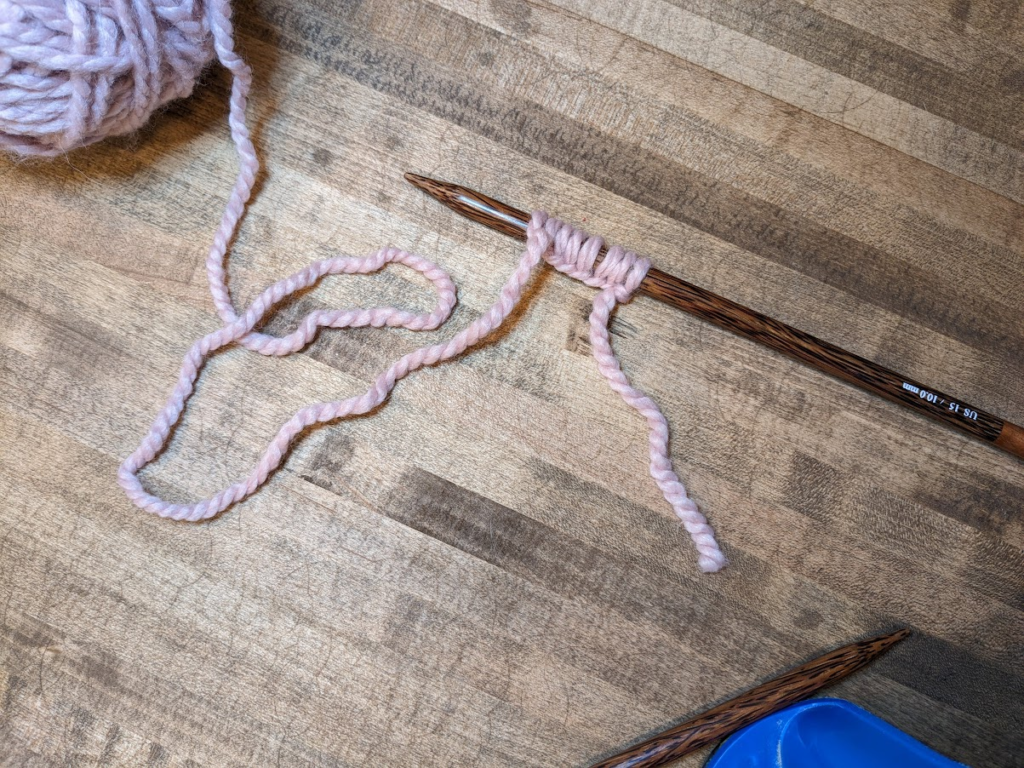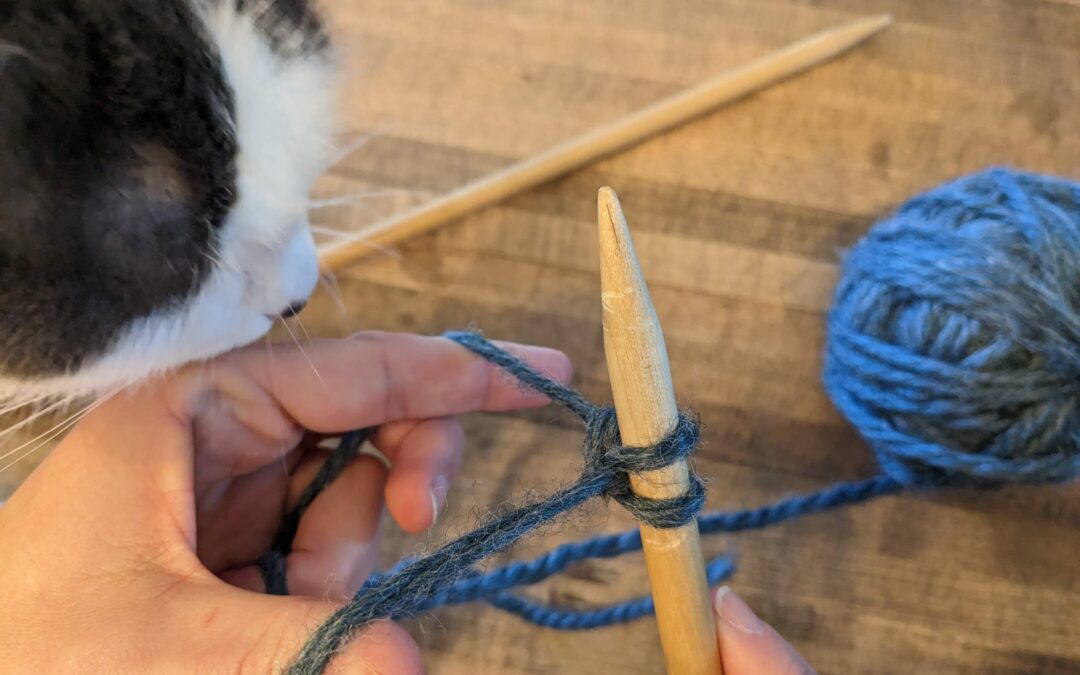You may not realize it, but there are countless cast-on methods. Ok, perhaps “countless” is an exaggeration, but there sure are many!
You don’t have to know them all, but it’s definitely worthwhile to learn at least a few methods. You can decide which one to use based on how it looks, or how it functions.
At the risk of sounding completely nerdy, I’m so excited to take this deep dive into cast-on methods for knitting!
What Does it Mean to Cast On?
When you “cast on” in knitting, you’re creating your first row of stitches; the rest of your project will be built off that first cast-on row. It’s always the first step in any knitting project.
There are tons of different ways to cast on, and you’re bound to find one that you like better than any other. It will likely become your go-to method for casting on. For example, I love long-tail cast-on; I don’t know why, but I think it’s really fun and satisfying!
How Do You Choose Which Cast On Method to Use?
Of course, you won’t always be at liberty to choose which cast-on method you use for your knitting. They have different qualities and uses, so not all cast-on methods are appropriate for every project. Some are more stretchy than others, while some create a stylized look.
Once you become familiar with each way of casting on, you can use what you know about them to decide if it’s right for what you’re knitting.
Your pattern may specify which type of cast-on you should use; that’s often a relief because then you don’t need to make any decisions. However, most patterns will simply state, “Cast on X amount of stitches.” That’s when you can dip into your endless bag of cast-on knowledge to choose from!
Main Variation in Different Cast-On Methods: Long-Tail vs. Short-Tail
All cast-on methods fall into one of two categories: long-tail or short-tail.
Long-tail (or double-strand) cast-on methods involve holding your yarn folded back on itself, working with two strands of it. One strand is the working yarn, while the other is connected to your skein.
This way of casting on is usually super quick and easy to work. The main difficulty with long-tail cast-on methods is that you first need to estimate how much yarn you’ll require for the cast-on. That can be a challenge.
Long-tail cast-on is only good for beginning your projects.

Short-tail (or single-strand) cast-on methods work with only one strand of yarn. This way of casting on usually is a bit slower and more tedious. However, the upside is that you don’t need to worry about figuring out how much yarn you’ll need ahead of time.
Short-tail cast-on methods are also very valuable because aside from using them at the beginning of your project, you can also use short-tail methods to add more stitches in the middle of your garment. For example, when you’re shaping armholes.
Knit Cast On Method
Most knitters learn how to use the knit cast-on first. It’s super simple, and also teaches most parts of working a knit stitch at the same time, making knitting a bit less overwhelming!
PROS:
- Knit cast-on isn’t a super quick method, but the faster you can do a knit stitch the faster you’ll do a knit cast-on.
- It provides a medium amount of stretch.
CONS:
- Can sometimes be a loose stitch, and project may eventually lose some of its shape.
Check out How To Knit for how to start with this cast on. To get you started, though, here’s how to get started with your slip knot! (HINT: you’ll use this for other methods, too!)



Long-Tail Cast-On Method
This one requires a bit of practice since you need to hold your yarn in a funky way. You essentially create a slingshot shape with your hands and yarn. However, once you get that perfected, it’s a super easy way of casting on.
PROS:
- Long-tail cast-on is an incredibly quick way to get stitches on your needle.
- Creates very even stitches, which makes your knitting look cleaner.
- Provides a firm border with a slight amount of stretch.
CONS:
- You need to estimate how much yarn the cast-on will require ahead of time, which can be quite challenging. It gets more complicated the larger your cast-on is.
Provisional Cast-On Method
Provisional casting on is for when you need to leave your stitches live, to pick them up and work your piece from the other direction. This method is not a cast-on that creates the edge of your knitting. You’ll need to know how to work a basic crochet chain stitch to create a provisional cast-on, which you later remove. These stitches are temporary.
PROS:
- Provides a lot of versatility in your work, allowing you to join two separate pieces of knitting.
CONS:
- Works up a bit more slowly than other cast-on methods.
- While not very difficult, also not super simple.
- Must learn crochet chain stitch first.
Cable Cast-On Method
A cable cast-on is very similar to the knit cast-on methods. There’s a slight variation in the stitch, though, so it makes the cast-on edge stand out slightly from the rest of the stitches.
PROS:
- Creates a very firm and even edge.
CONS:
- Easy to accidentally make your stitches too tight.
- No stretch in this method; don’t use it for hats or socks!

Begin with a slip knot on your left needle. Insert your right needle, as if to knit.

Wrap yarn around right needle and bring in between your needles, from back to front.

Pull the wrapped yarn through the loop on the needles.

Transfer the loop that’s around both needles to the left needle.

Insert right needle between the two stitches on your left needle.

Wrap the yarn around as you would for a knit stitch.

Pull the wrapped yarn through the stitch.

Pull the loop away from the left needle; you need to create space for these stitches.

Slide your left needle under and into the loop.

Transfer the loop off of the right needle and onto the left one.

Keep repeating until you have the needed number of stitches. Remember to leave these loose!
Single Cast-On Method
This is another excellent stitch for beginners since it’s one of the easiest cast-on methods to learn. It’s also fairly unnoticeable, meaning that if you’re doing some fancy stitchwork it won’t compete for attention.
PROS:
- Works up very quickly.
- Super stretchy.
CONS:
- Really difficult to keep tension even while working the single cast-on method. An uneven edging can make your knit piece look unprofessional.

Create a slip knot on your needle; hold the needle in your right hand.

Loop the yarn around your left thumb.

Insert your needle under the loop around your thumb.

Slide thumb out of loop, transferring it onto your needle.

Repeat. Wasn’t that crazy easy?!
Did I miss your favorite cast-on method? Which one do you prefer to do? Please let me know in the comments!

